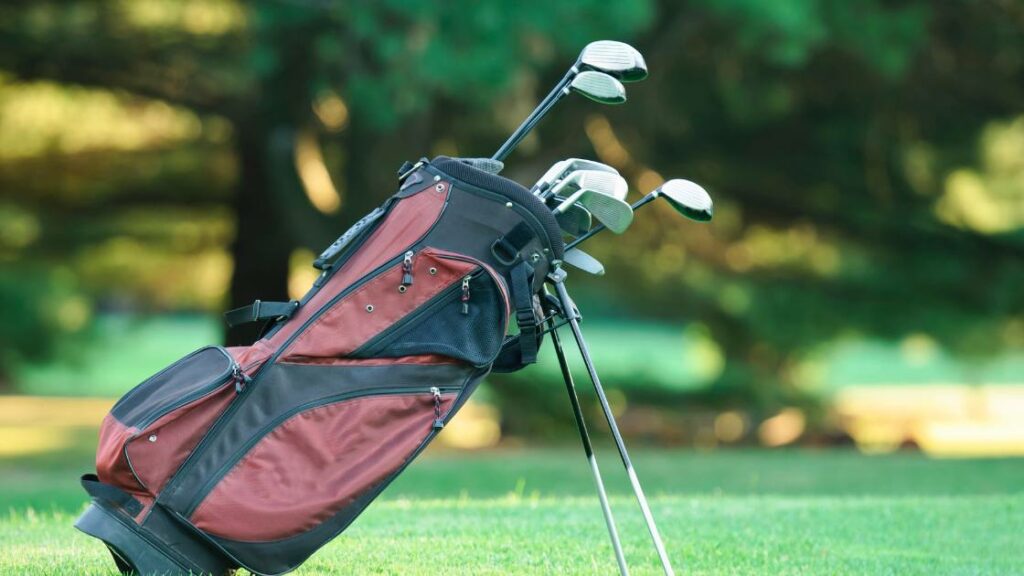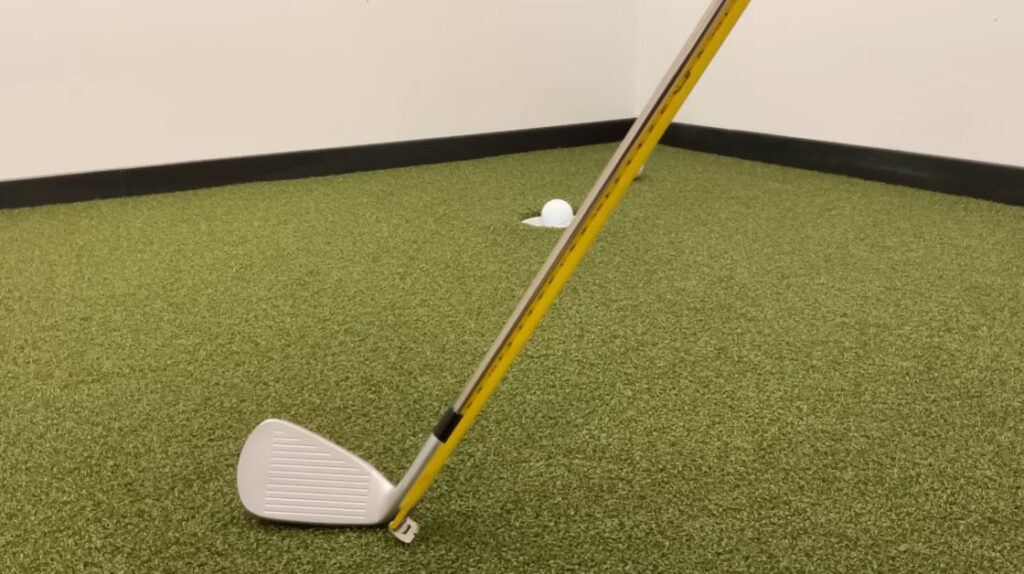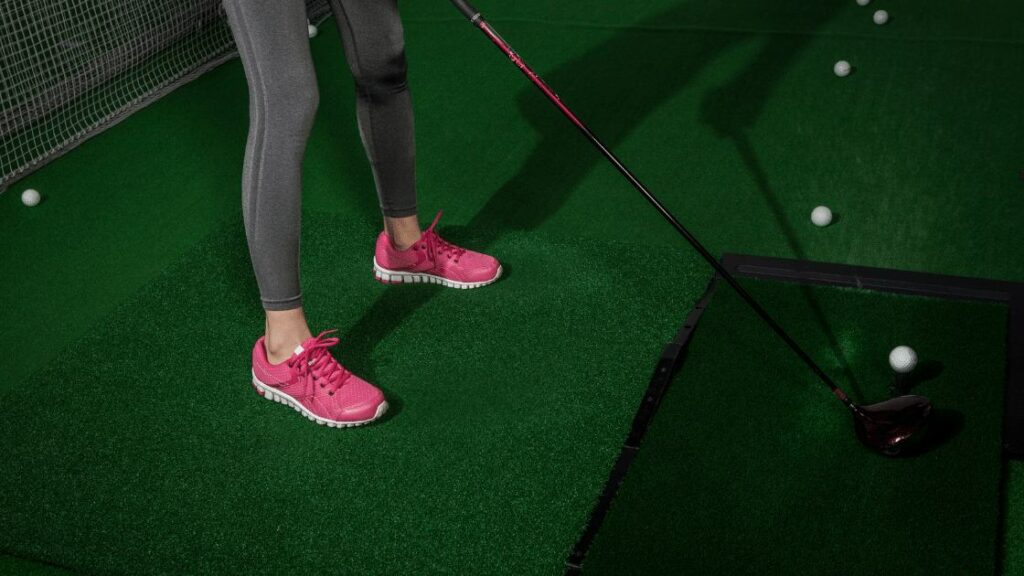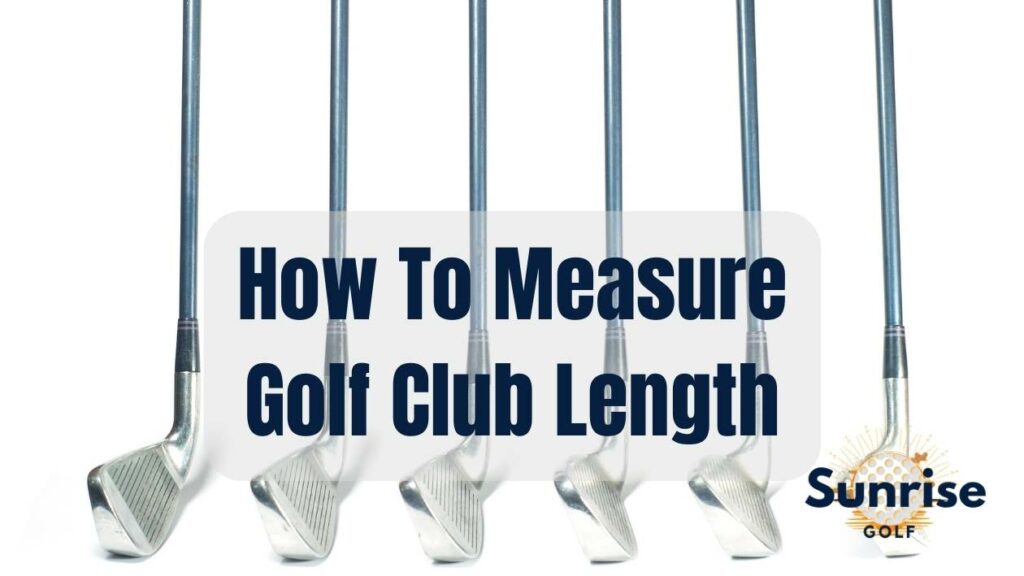How to Measure Golf Club Length: A Comprehensive Guide
Are you struggling to improve your golf game, despite countless hours on the course and the driving range? The answer might lie in the length of your golf clubs. In this comprehensive guide, we will explore the importance of accurate golf club length and how to measure golf club length, various methods for measuring and adjusting clubs, and recommendations tailored to men, women, and golfers of all heights. Armed with this knowledge, you’ll be better equipped to enhance your performance and make the most of your time on the green.
Key Takeaways
- Having the correct golf club length is essential for swing mechanics, accuracy, and injury prevention.
- Professional club fitting can help find the ideal balance between distance and control when selecting clubs.
- Adjusting golf clubs requires professional fitting to ensure optimal performance characteristics are achieved.
The Importance of Correct Golf Club Length

Having the right golf club length is fundamental to your swing mechanics, accuracy, and injury prevention. A correctly fitted club enhances performance, allowing you to capitalize on your swing’s potential and strike more accurate and longer drives. By assessing factors such as height, arm length, and wrist-to-floor measurement, professional club fitters help you find the right club length for your game. Using clubs that are ill-fitting can be detrimental to your game. Mis-hits, lack of accuracy, and increased risk of injury may result due to improper length.
Let’s delve into the influence of club length on your swing mechanics and the equilibrium between distance and control.
Impact on Swing Mechanics
Golf club length directly affects your stance, swing plane, and power, making it an essential factor for consistent and precise shots. Hence, maintaining the right club length is crucial for peak performance. However, not all golf club manufacturers adhere to the same standard size.
In addition to your swing posture and arm length, factors such as the type of golf course and playing conditions should be taken into account when deciding on the appropriate length for your golf irons. Taking these factors into account and customizing the club length to match your specific needs will enhance your golf-playing abilities.
Distance vs. Control
Longer clubs can generate more distance, but they may also lead to inconsistent shots and difficulty in achieving correct balance and posture. Conversely, shorter clubs can reduce swing speed while offering better control and precision. The key is to find the right balance between distance and control for your unique swing characteristics when choosing the right golf clubs.
The right club length is key to optimizing both distance and accuracy. Gaining insights into the consequences of incorrect golf club length and collaborating with a qualified professional to find the right length will equip you to handle any golf course and improve your game.
Measuring Your Golf Club Length: Step-by-Step Guide

Now that we know the importance of correct golf club length, it’s time to learn how to measure it accurately. This step-by-step guide will outline the tools and techniques needed to measure club length accurately, guaranteeing a perfect fit for your game.
The first step is to gather the necessary tools. You’ll need a tape measure.
Required Tools
To measure your golf club length accurately, you’ll need a measuring tape or yardstick, a flat surface, and a 60-degree angle. Place the measure golf club on a flat surface, ensuring the center of the club’s sole is in contact with the ground.
Use measuring tape or yardstick to measure the length from the end of the grip to the club’s heel, where the sole of the club and the shaft intersect at the corner of the club face. Double-check your measurements to ensure accuracy.
Measuring Shaft Length
To measure the shaft length of a golf club, position your measuring stick or tape measure at the end of the grip and extend it down to the club’s heel, where the sole of the club and the shaft intersect at the corner of the club face. An accurate measurement of the shaft length is crucial since it can impact your swing mechanics, distance, and control. Measuring golf club length correctly ensures optimal performance on the course.
Remember that different clubs may require different shaft lengths.
Factoring in Club Head and Grip
When determining the overall length of a golf club, be sure to account for both the club head and grip. Measure the length of the shaft from the end of the grip cap to the point where the shaft meets the club head.
Considering these factors will provide a complete measurement of your club length, assisting you in finding the perfect size for your game.
Finding the Right Club Length for Your Height
While the wrist-to-floor measurement method and dynamic fitting are effective ways to find the right club length, height-based recommendations can also provide valuable guidance.
This section will guide you on how to establish the suitable golf club length according to your height, using a golf club length chart.
Height-Based Recommendations
Your overall height plays a significant role in determining the right club length for your game. Using height-based charts and guidelines can give you a general idea of the suitable golf club length for your stature.
Keep in mind that these charts are merely a starting point, as individual differences in arm length and swing posture can also affect the ideal club length. Considering all relevant factors, including height, wrist-to-floor measurements, and in-swing factors, is pivotal in identifying the most suitable club length for your game.
Adjustments for Arm Length
Arm length is another essential factor to consider when determining the ideal club length. Longer arms may necessitate a longer club, while shorter arms may require a shorter club.
The wrist-to-floor measurement method can help account for arm length, as it measures the distance from the wrist to the floor while standing upright with arms hanging naturally. Utilizing this method together with height-based recommendations will help you identify the most precise and comfortable club length tailored to your swing and body dimensions.
Wrist-to-Floor Measurement Method
The wrist-to-floor measurement method is a popular and effective way to find the right club length for your game. Here’s how to do it:
- Stand upright with your arms hanging naturally.
- Measure the distance from your wrist to the floor.
- This measurement provides valuable insight into the perfect club length for your height and arm length.
This straightforward and effortless method can assist you in identifying the proper club length, ensuring the correct club length for an ideal fit in your game.
How to Measure Wrist-to-Floor
To measure your wrist-to-floor distance, stand upright with your arms hanging naturally at your sides. Measure the distance from the crease at the bottom of your palm near the wrist to the top of the floor.
Knowing how to measure golf club length can help you find the right club length tailored to your individual needs, and understanding the process of measuring club length is essential for achieving this goal.
Using Wrist-to-Floor Measurements
Wrist-to-floor measurements are useful in determining the appropriate club length for your unique swing and body dimensions. Taking into account both your overall height and wrist-to-floor measurement will help you discover the most precise and comfortable club length for your game.
It’s important to remember that wrist-to-floor measurements should be used in conjunction with height-based recommendations and other fitting methods, such as dynamic fitting, to ensure the most accurate club length assessment possible.
Dynamic Fitting: In-Swing Considerations

Dynamic fitting takes into account your in-swing factors, such as stance, posture, and launch angle, to determine the best club length for your game. A professional club fitter can help determine the right club length for you by assessing these factors during your swing, tailoring to your individual needs and swing traits.
This customized approach to club fitting guarantees that you reap the maximum benefits from your clubs by allowing you to gain maximum benefits from your clubs.
Assessing Stance and Posture
During a dynamic fitting, the club fitter will analyze your stance and posture to identify any adjustments needed for optimal club length. Factors such as the angle of your feet, the position of your hips, and the angle of your arms will be taken into consideration, ensuring that the club length is tailored to your unique swing and body dimensions.
This aids in ensuring that the club is the appropriate length for your swing, enabling you to swing.
Launch Angle and Shaft Flex
Another crucial factor to consider during a dynamic fitting is the launch angle and shaft flex of your golf club. A softer tip flex of the shaft will result in a higher launch angle and spin rate, while altering the loft of the club head can also impact dynamic loft and launch angle, affecting the performance of your golf ball.
Considering these factors during the fitting process ensures optimal distance and trajectory with your chosen club length.
Women’s Golf Club Length: Differences and Recommendations
When it comes to women’s golf club length, there are some differences compared to men’s clubs. However, the process of finding the right club length remains similar.
This section will delve into the differences in standard lengths between men’s and women’s clubs, along with recommendations for the fitting process.
Standard Length Differences
Women’s standard golf club lengths are typically an inch shorter than men’s, as they are designed to accommodate the average height difference between men and women. For example, men’s standard driver lengths range from 44 to 45 inches, while women’s range from 42 to 44 inches.
Despite these differences, keep in mind that individual fitting remains crucial for optimal performance and comfort when you play golf on the golf course.
Fitting Process for Women
The fitting process for women is similar to that of men, with the primary difference being the standard club lengths. Just like with men, height, arm length, and wrist-to-floor measurements should be considered when fitting a woman for clubs.
In addition, in-swing factors such as launch angle and shaft flex should also be taken into account to find the right club length for each individual golfer.
Adjusting Golf Club Length: Tips and Considerations
Adjusting golf club length can improve your performance on the course, but it’s essential to consider the effects on shaft flex and overall fit before making any changes. To ensure proper adjustments, consult the United States Golf Association guidelines on club length.
This section will provide tips and considerations for adjusting club length, highlighting the differences between trimming and extending clubs, and the effects of these adjustments on shaft flex.
Trimming vs. Extending
Trimming or extending a club can alter its performance characteristics, so it’s important to consult a professional for guidance before making any adjustments. Keep in mind that trimming the club length can result in an increase in shaft flex, while extending the club length can lead to a decrease in shaft flex.
A professional club fitter can guide you towards the best action plan, considering your personal needs and swing traits.
Effects on Shaft Flex
Adjusting club length can have a direct impact on shaft flex, which in turn affects swing speed, control, and accuracy. Shortening the shaft will result in a stiffer flex, while lengthening the shaft may lead to a more flexible flex.
Seek advice from a professional club fitter to establish the perfect blend of club length and shaft flex for your swing and game.
Summary
In conclusion, finding the right golf club length is essential for maximizing your performance on the golf course. By understanding the importance of club length, learning how to measure it accurately, and considering factors such as height, wrist-to-floor measurements, and in-swing factors, you’ll be well-equipped to find the perfect club length for your unique swing and body dimensions. Remember to consult with a professional club fitter for guidance and personalized recommendations, and enjoy the benefits of improved accuracy, distance, and control in your golf game.
Frequently Asked Questions
How do you measure a golf club loft at home?
Measuring the loft of a golf club at home can be done by setting it up in the address position and using a protractor to measure the angle between the face plane and the vertical.
How do I know my driver length?
To determine the driver length, compare your height to the Height – Driver Length Fitting Chart and find the corresponding shaft length for your height.
Make sure to check the grip end of the driver down to the heel of the club for accuracy.
What are the key factors to consider when determining the right golf club length?
When selecting the appropriate golf club length, important factors to consider include your height, arm length, wrist-to-floor measurement, stance, posture, and launch angle.
How do I measure my golf club length accurately?
Accurately measure your golf club length by laying the club on a flat surface and using a measuring tape or yardstick to measure the length from the end of the grip to the club’s heel, making sure the angle between them is 60 degrees.
This is an important step in ensuring that your golf clubs are the correct length for your body and swing. It is also important to make sure that the angle between the grip and the club’s heel is 60 degrees, as this will ensure that the club is properly balanced and will provide the best performance.
What is the wrist-to-floor measurement method?
The wrist-to-floor measurement method involves measuring the distance from your wrist to the floor while standing with arms hanging naturally.
This can help you find the right club length tailored to your individual needs.

